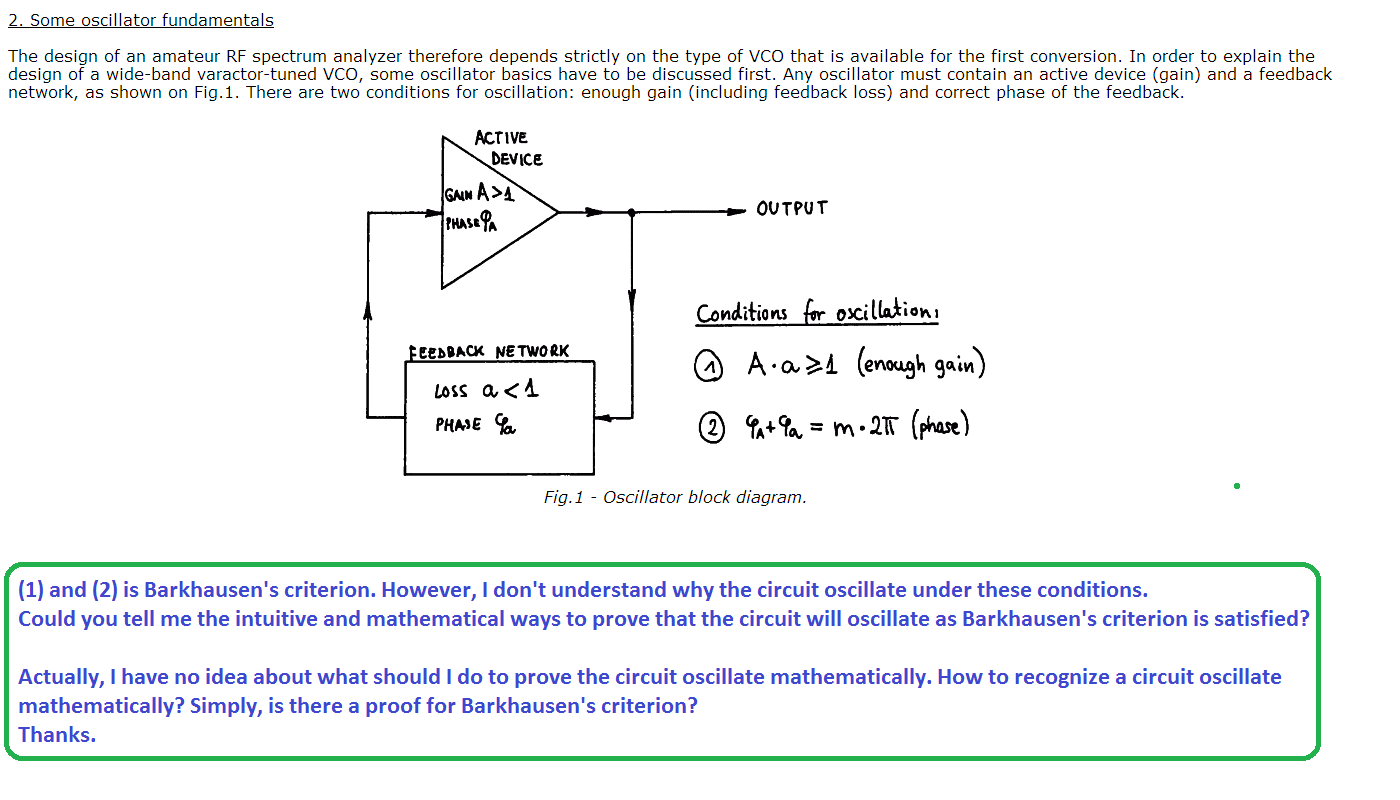Hi,
Intuitively if you look at an amplifier with the output going back to the input it makes sense that after the initial start up if the output feeds the input and the input signal is responsible for the output signal then if the input causes the output to increase then the output will always increase.
Mathematically the circuit will oscillate with damped oscillations when the roots lie in the left half plane of the complex plane, and the circuit will oscillate with increasing oscillations when the roots like in the right half plane, and if the roots lie right on the jw axis the circuit oscillates like a sine wave oscillator.
Most circuits can not do this by themselves though because even a tiny amount of component change shifts the root to the left or right and even a tiny shift away from the jw axis means it either ramps up to saturation or ramps down to zero. That means a secondary form of control (non linear) has to regulate the position of the roots so that they stay near the jw axis, perhaps a little to the rigth, then a little to the left, then a little to the right again, keeping the average on the jw axis.
Also noteworthy is when the root is near to the jw axis the ramping up or down takes place relatively slowly, so it make take a while to get to saturation or zero. But when the roots are far from the jw axis in either plane the ramping takes place relatively fast so the amp may go into saturation a millisecond after turn on. It all depends on the exponential exponent value.
This is very easy to illustrate in the time domain too because the exponential is the simple:
e^(a*t)
and it's easy to see that if 'a' is positive the exponential ramps up to infinity with time, and if 'a' is negative the exponential ramps down to zero with time.
If 'a' is zero then the root is right on the jw axis and the response depends on the sinusoidal part of the response (not shown for simplicty).



